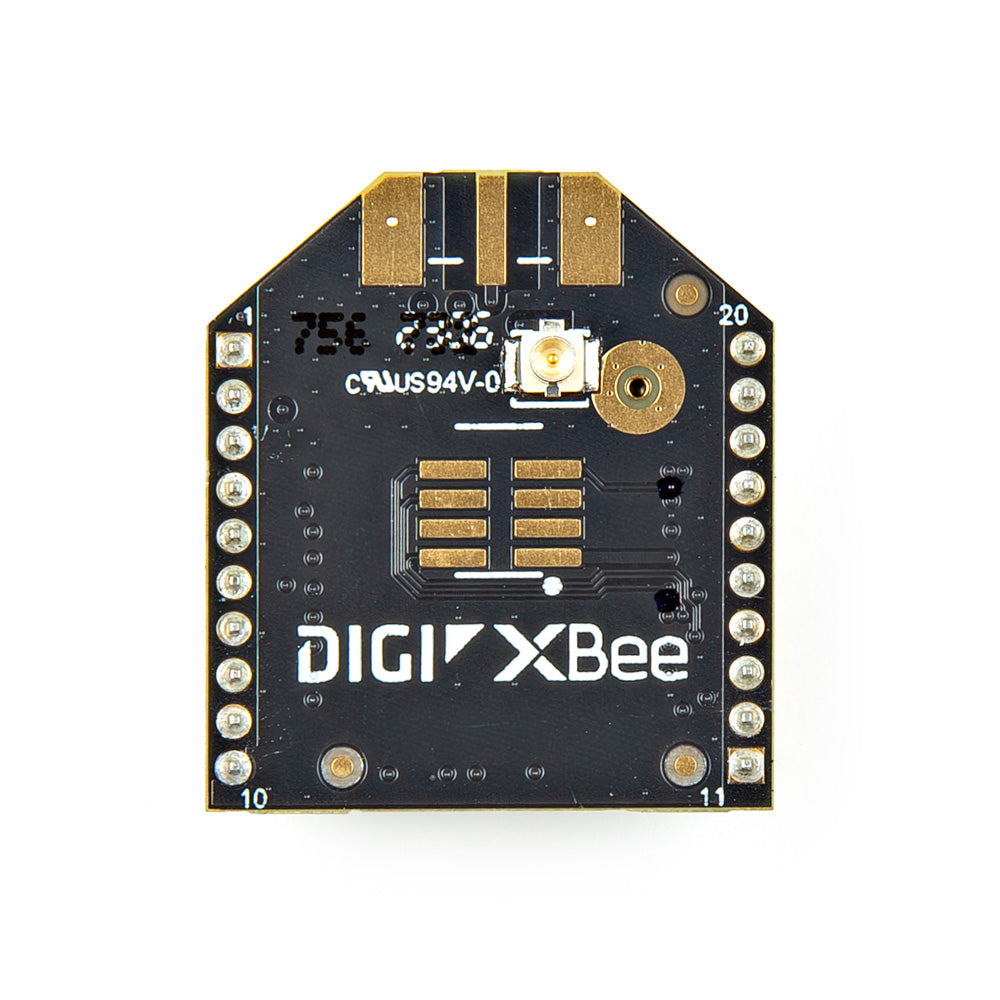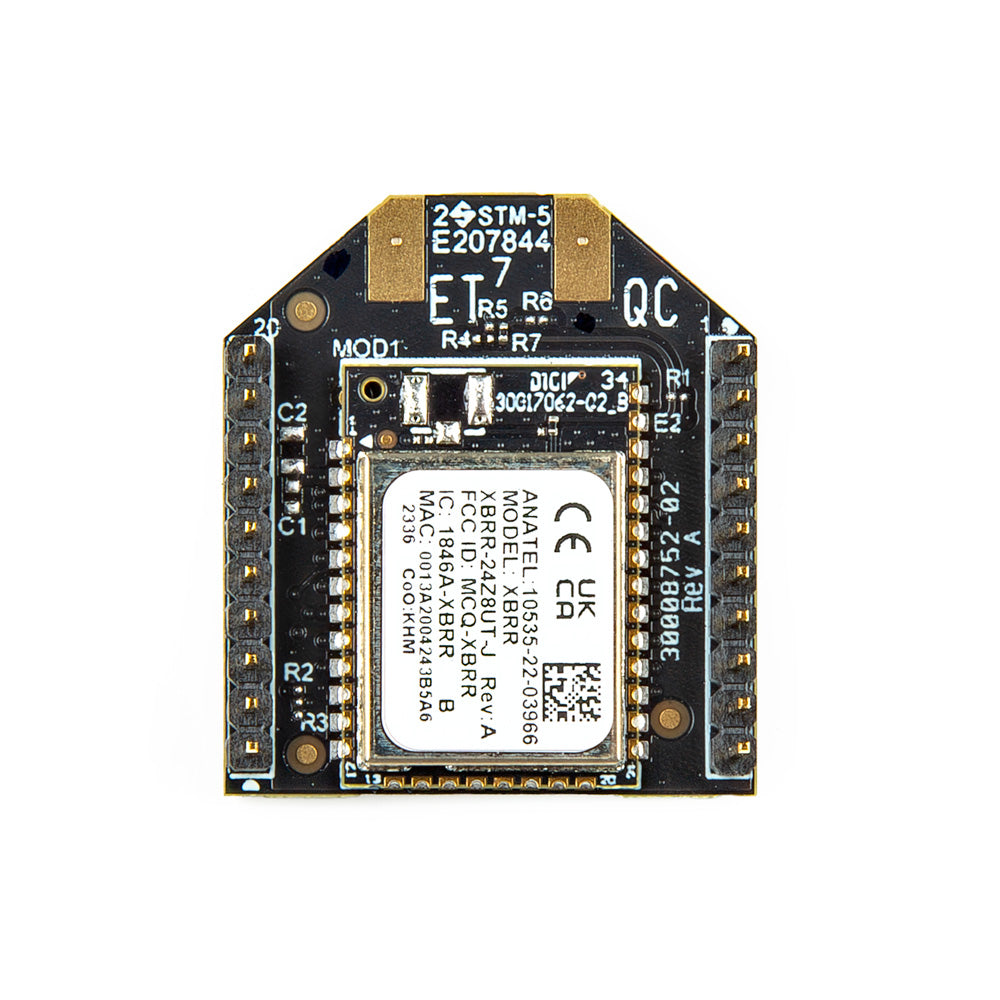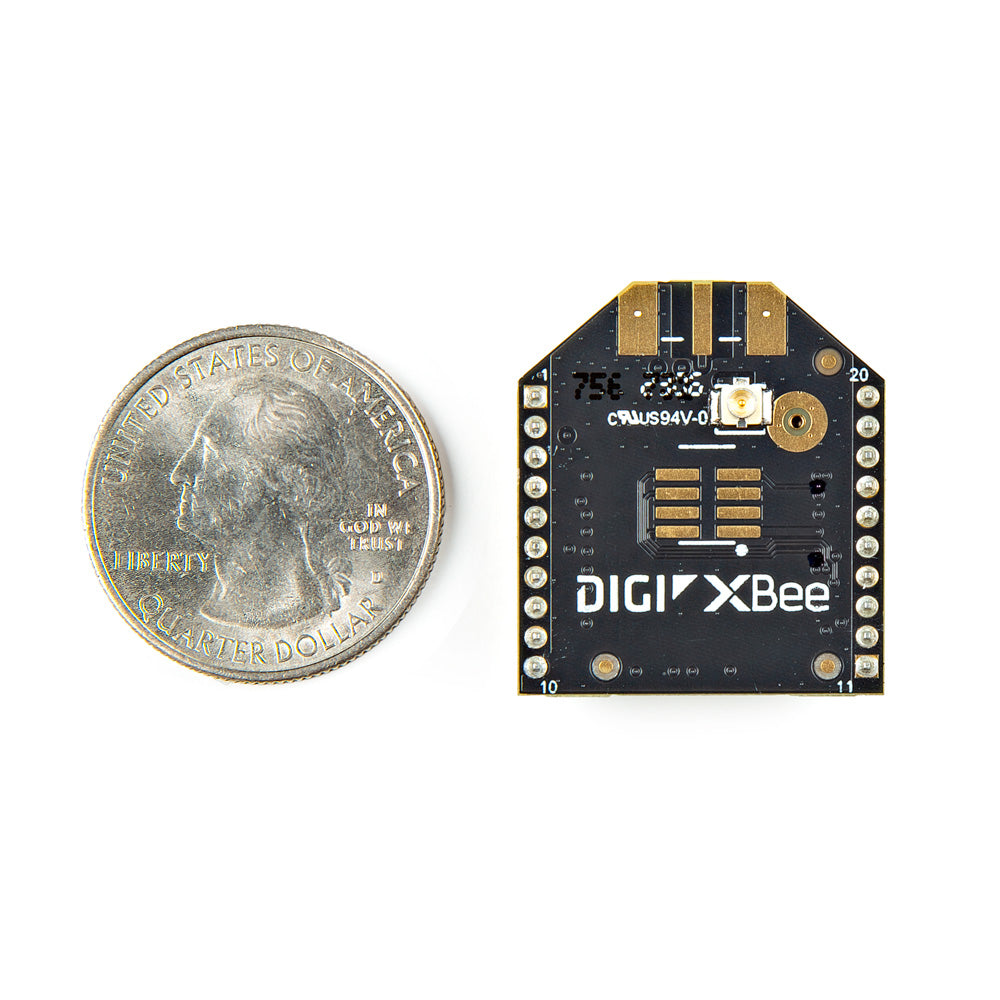The XBee RR 802.15.4 RF Modules offer a great wireless end - point connection for devices. Using the IEEE 802.15.4 networking protocol, they enable fast point - to - multipoint or peer - to - peer networking. Ideal for high - throughput applications that need low latency and predictable communication timing, these modules support low - cost, low - power wireless sensor networks. They use minimal power and ensure reliable data delivery between devices, operating in the 2.4 GHz ISM frequency band. You can configure them locally with BLE via the Digi XBee Mobile app. The XBee RR is similar to the XBee3 but lacks MicroPython and full BLE programmable services. The XBee series is nearly plug - and - play for microcontroller projects, and the RR series builds on this. This RR module comes with a U.FL Antenna connector (antenna sold separately). Check the datasheet for full details. Features include 2.4 GHz, Zigbee, U.FL antenna, through - hole design, 1 MB flash and 96 kB RAM, Silicon Labs EFR32MG SoC transceiver chipset, RF 250 Kbps and serial up to 1 Mbps data rate, indoor/urban range up to 90 m (300 ft), outdoor/line - of - sight range up to 3200 m (2 miles), +19 dBm transmit power, −103 dBm normal mode receiver sensitivity, support for BLE 4.2 (slave only) with potential for BLE 5.0 upgrade, UART and SPI serial data interface, operating temperature from −40 °C to 85 °C, dimensions of 2.438 x 2.761 cm, supply voltage of 1.72 – 3.8 V, 195 mA transmit current at 19 dBm, and Zigbee 3.0 protocol.



Using the Digi XBee® RR Module is easy. First, connect it to your device through the appropriate interface like UART or SPI. If you want to configure it locally, use the Digi XBee Mobile app with BLE. When using the antenna, make sure to get a compatible one as the antenna is sold separately. Keep in mind the operating temperature range from - 40 °C to 85 °C. Don't expose it to extreme temperatures outside this range. For power supply, use a voltage between 1.72 and 3.8 V. To maintain the module, keep it clean and dry. Avoid any physical damage to the module and its components. If you need to upgrade the software for better Bluetooth performance, follow the instructions provided in the future releases.







